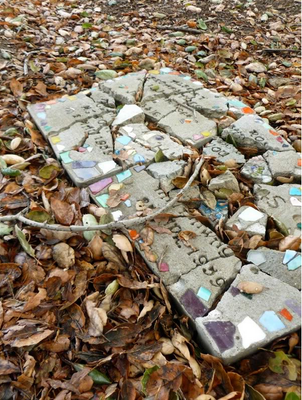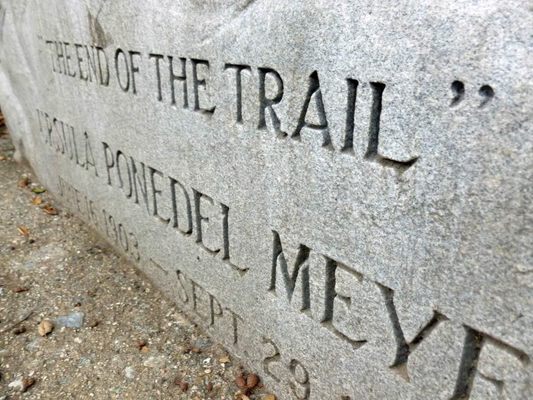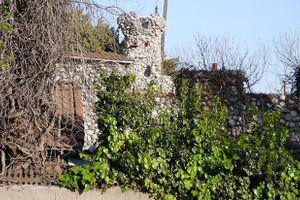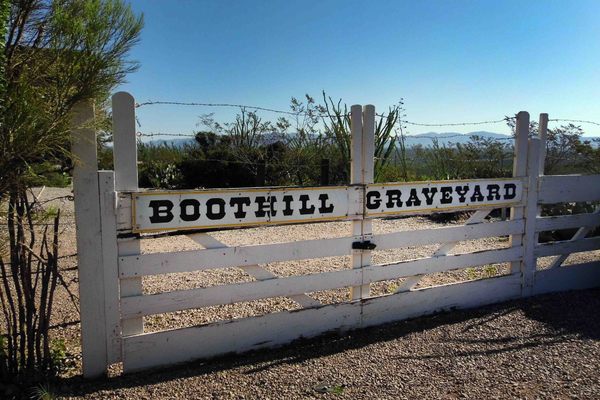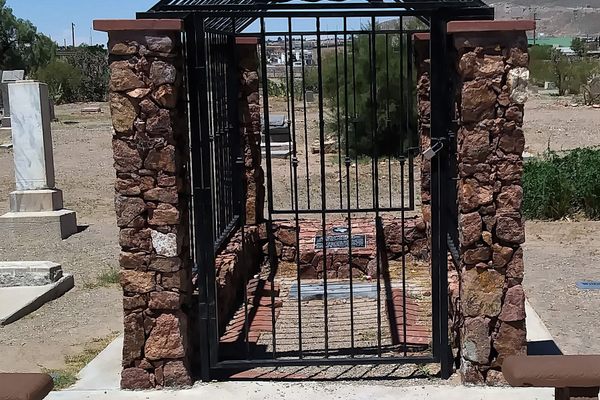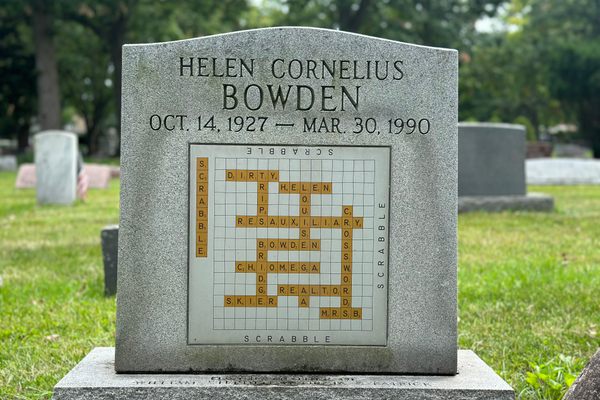About
This well-hidden cemetery in Los Angeles County once serviced the frontier town of Spadra.
Originally part of the sprawling Rancho San Jose land grant, the area was settled by lower class families escaping poverty and war in the American South. The town of Spadra was officially founded in 1866. According to the blog Avoiding Regret, settlers in the surrounding Pomona Valley referred to Spadra by the horrific name “Monkeytown.”
Despite the insulting prejudice, the village was soon thriving and lively, boasting many “firsts,” including the first school district in east Los Angeles County. By 1870, Spadra had three stores, warehouses, blacksmiths, a school, and a post office. It was an important stage coach stop between Los Angeles and Yuma, Arizona. But the town had its share of drama, which included many mysterious deaths, suicides, and murders, which no doubt helped necessitate a community graveyard to service the town.
In 1873, Spadra pioneer rancher and developer Louis Phillips signed a contract with the Southern Pacific to build a railway line to Spadra. In 1875, Phillips built a grand mansion in the village, which still exists today. But the great town Phillips envisioned was not to be. Shortly after it reached Spadra, the railroad line was extended again. Now it ran all the way to the city of Colton in the Inland Empire. It was no longer prudent to stop in Spadra, and the town soon began to shrink. As it shrunk, the graveyard continued to fill up with residents, including Louis Phillips himself, who was buried there in the year 1900.
Spadra's other claim to fame was as the site of the Pacific Colony, a California state hospital for the "feeble-minded" established in 1920. Locals unkindly referred to those they considered of diminished capacity as Spads.
Eventually, Spadra was annexed by the neighboring town of Pomona in 1964. Today, industrial buildings stand in the place of the town's original structures. Other than the Phillips Mansion, the cemetery is all that remains of Spadra. It sits behind a locked gate, down a dirt road and across well-worn train tracks. Many of the graves have had their headstones broken by vandals. Some graves have been cemented over to prevent further vandalism. Even Louis Phillips’ grave has been toppled and vandalized. The cemetery serves as a poignant reminder that “the best laid plans of mice and men/go oft awry."
Related Tags
Know Before You Go
The entrance to Spadra Cemetery shares a driveway with Altec Southern California Service Rentals, which is about 100 feet east of the 57 Freeway. The graveyard is located 500 feet south of the entrance gate, across a set of railroad tracks. The cemetery is on private property and venturing onto its grounds is trespassing. The Historical Society of Pomona Valley often leads guided tours of the cemetery.
Community Contributors
Added By
Edited By
Published
March 18, 2016
Sources
- http://uselectionatlas.org/FORUM/index.php?topic=200471.0
- http://www.avoidingregret.com/2012/11/photo-essay-where-dead-rest-in-dead.html
- http://www.dailybulletin.com/lifestyle/20141027/artful-spadra-tombstone-offers-few-answers-to-70-year-old-questions
- http://www.iamnotastalker.com/2015/10/16/spadra-cemetery/
